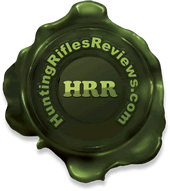Whitetail Deer Calls
Mouth calls - this type of whitetail deer calls are considered to be the most versatile calls available. Most of the mouth calls are some form of grunt call, consisting of a plastic/wooden mouth-piece at one end and a flexible accordion-type at the other end. In between, there is an internal reed diaphragm. They imitate the numerous grunting sounds made by the bucks that are pursuing does. Many of these calls can be adjusted by either lengthening or shortening the elastic tube or come with interchangeable tubes (different diameters or lengths).
These adjustments will vary the call's tone and pitch: higher-pitched sounds are produced by using longer and narrower tubes while deeper sounds are produced by using shorter and wider tubes. Higher-pitched calls imitate the sounds made by a young buck while the deeper sounds imitate the sounds made by an older male. The vast majority of these whitetail deer calls function by the classic method: blowing into the mouthpiece; but there are some calls that allow you to both inhale and exhale in order to imitate the highly-aggressive snort-wheeze created by a dominant buck just before fighting another buck. Some calls also allow you to make bleat sounds (such calls have an adjustment ring). Hands-free calls have been introduced and are primarily used by bow hunters. This type of calls are smaller in comparison with the other calls and are held in the hunter's lips or teeth, thus leaving the hunter's hands available.
Regardless of what type of call you will use, an instructional CD, DVD or audio cassette is the most recommended method for learning how to use the call efficiently. A little word of advice: medium to high-pitched calls won't scare off young deer in comparison to the deeper sounds made by an older buck.
Bleat cans - these calls are considered to be the easiest calls a hunter can use (if we don't take into consideration the electronic calls). These calls are made up of a small and perforated can which has an internal sounding device; using these one-handed calls is rather easy, by simply tipping them upside down and after that, bringing them upright again will produce realistic doe/fawn bleats/bawls. For long-range calling, larger and louder calls are recommended; these calls should also be used in windy conditions also. Another word of advice: most bucks will try to get near your calling position from downwind so that they will get your scent before showing themselves. Set up a "natural obstacle" downwind of you, an example of a natural obstacle would be a bluff or a waterway.
Rattling - imitating the sounds made by two rut-crazed bucks that are fighting is an efficient method of getting the attention of a dominant buck. For many years, hunters used real antlers but they have a major downside: they dry out over time and they lose their tone. These imitation rattling antlers sound exactly like the real thing and they never dry out. Some of these imitations are created in such a way in order to keep the chances of smashing your own fingers while using them to a minimum. The major drawback these rattling antlers have is that they require the usage of both hands and can be difficult to carry around in the woods.
Electronic calls - this type of calls imitate actual deer sounds and feature multiple pushbutton deer vocalizations not to mention the sound of two bucks fighting - all these recorded from live deer. Some of the models are all-in-one transmitter/speaker products, while other products feature wireless remotes along with multiple long-range receivers that can give the feeling of a deer in motion. All electronic calls are battery powered.
It doesn't really matter what type of whitetail deer calls you are planning to use, just keep in mind that you shouldn't overdo it. Experienced hunters recommend a few calls every 15-30 minutes with variations of volume and duration.
These adjustments will vary the call's tone and pitch: higher-pitched sounds are produced by using longer and narrower tubes while deeper sounds are produced by using shorter and wider tubes. Higher-pitched calls imitate the sounds made by a young buck while the deeper sounds imitate the sounds made by an older male. The vast majority of these whitetail deer calls function by the classic method: blowing into the mouthpiece; but there are some calls that allow you to both inhale and exhale in order to imitate the highly-aggressive snort-wheeze created by a dominant buck just before fighting another buck. Some calls also allow you to make bleat sounds (such calls have an adjustment ring). Hands-free calls have been introduced and are primarily used by bow hunters. This type of calls are smaller in comparison with the other calls and are held in the hunter's lips or teeth, thus leaving the hunter's hands available.
Regardless of what type of call you will use, an instructional CD, DVD or audio cassette is the most recommended method for learning how to use the call efficiently. A little word of advice: medium to high-pitched calls won't scare off young deer in comparison to the deeper sounds made by an older buck.
Bleat cans - these calls are considered to be the easiest calls a hunter can use (if we don't take into consideration the electronic calls). These calls are made up of a small and perforated can which has an internal sounding device; using these one-handed calls is rather easy, by simply tipping them upside down and after that, bringing them upright again will produce realistic doe/fawn bleats/bawls. For long-range calling, larger and louder calls are recommended; these calls should also be used in windy conditions also. Another word of advice: most bucks will try to get near your calling position from downwind so that they will get your scent before showing themselves. Set up a "natural obstacle" downwind of you, an example of a natural obstacle would be a bluff or a waterway.
Rattling - imitating the sounds made by two rut-crazed bucks that are fighting is an efficient method of getting the attention of a dominant buck. For many years, hunters used real antlers but they have a major downside: they dry out over time and they lose their tone. These imitation rattling antlers sound exactly like the real thing and they never dry out. Some of these imitations are created in such a way in order to keep the chances of smashing your own fingers while using them to a minimum. The major drawback these rattling antlers have is that they require the usage of both hands and can be difficult to carry around in the woods.
Electronic calls - this type of calls imitate actual deer sounds and feature multiple pushbutton deer vocalizations not to mention the sound of two bucks fighting - all these recorded from live deer. Some of the models are all-in-one transmitter/speaker products, while other products feature wireless remotes along with multiple long-range receivers that can give the feeling of a deer in motion. All electronic calls are battery powered.
It doesn't really matter what type of whitetail deer calls you are planning to use, just keep in mind that you shouldn't overdo it. Experienced hunters recommend a few calls every 15-30 minutes with variations of volume and duration.
Top 5 Whitetail Deer Calls
General Info
Equipment & Tools







